I tend to enjoy certain, local waters, where the frequency of riffles, pocket water, and even cascading steps of short waterfalls offer abundant spots for dry flies in fast and very choppy water. In response, I wanted to tie something that says “juicy bug” a bit more loudly … and perhaps can trigger a few more of those snap-decision takes that make fishing waters like this more productive.
- #12 dry hook (I used barbless one for these)
- Rust colored thread (Veevus 10/0, this time)
- Grizzly hackle in #10 for the collar (I like them scaled one step up)
- Grizzly hugger pack, for tail fibers and wings
- Elk Hair in Natural coloration
- Grey dubbing
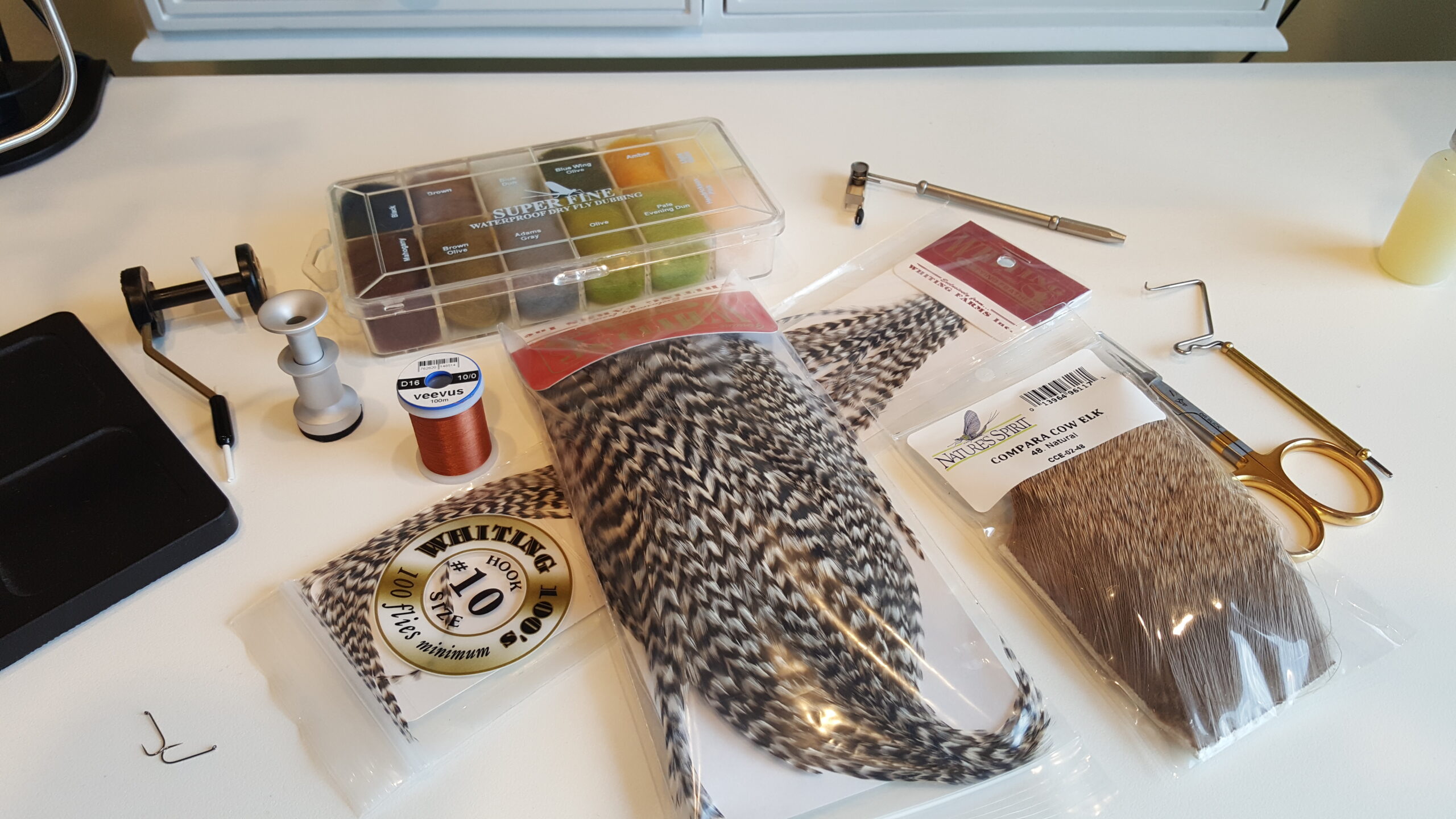 Start with the hook firmly anchored.
Start with the hook firmly anchored.
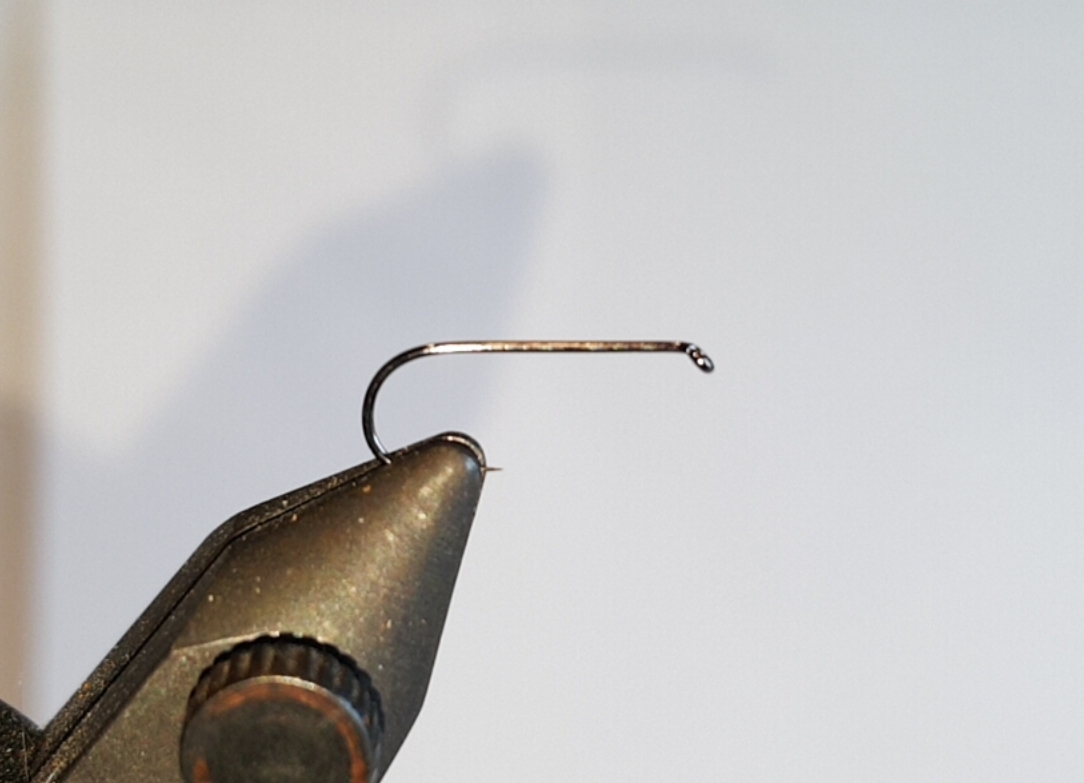
Wrap the thread starting behind the eye, for a firm foundation.
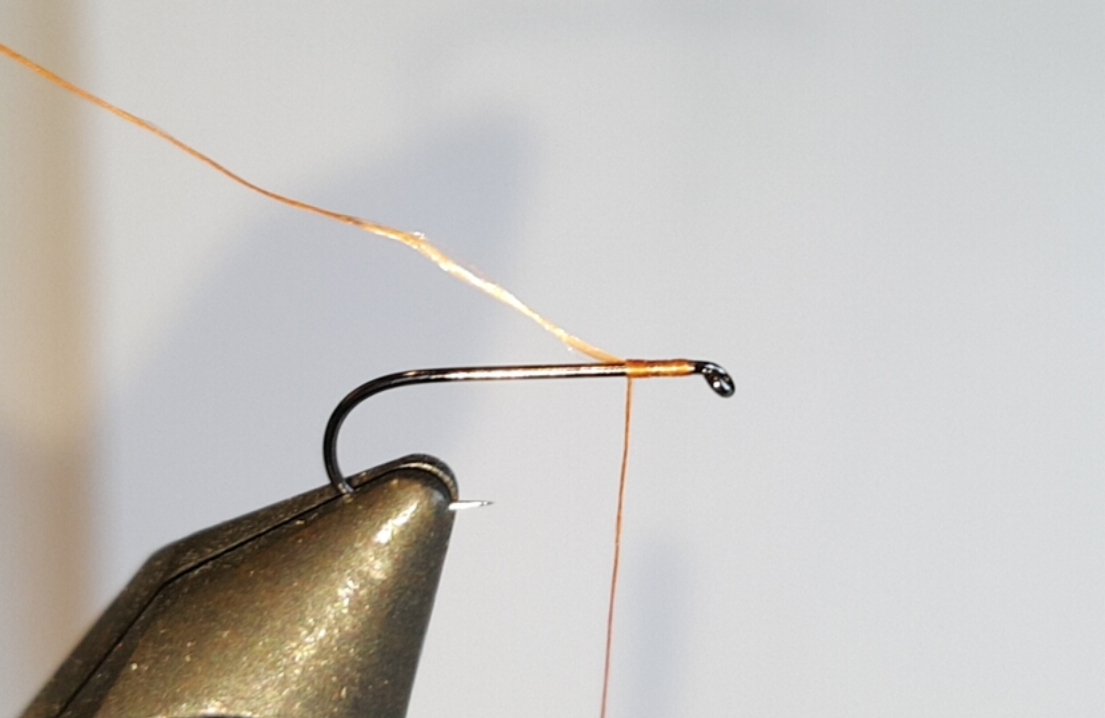
Wrap fairly tightly to the back, trimming the tag end off early enough that it is fully wrapped under. I usually layer a bit at the top of the bend, to secure tail fibers against a small bump.
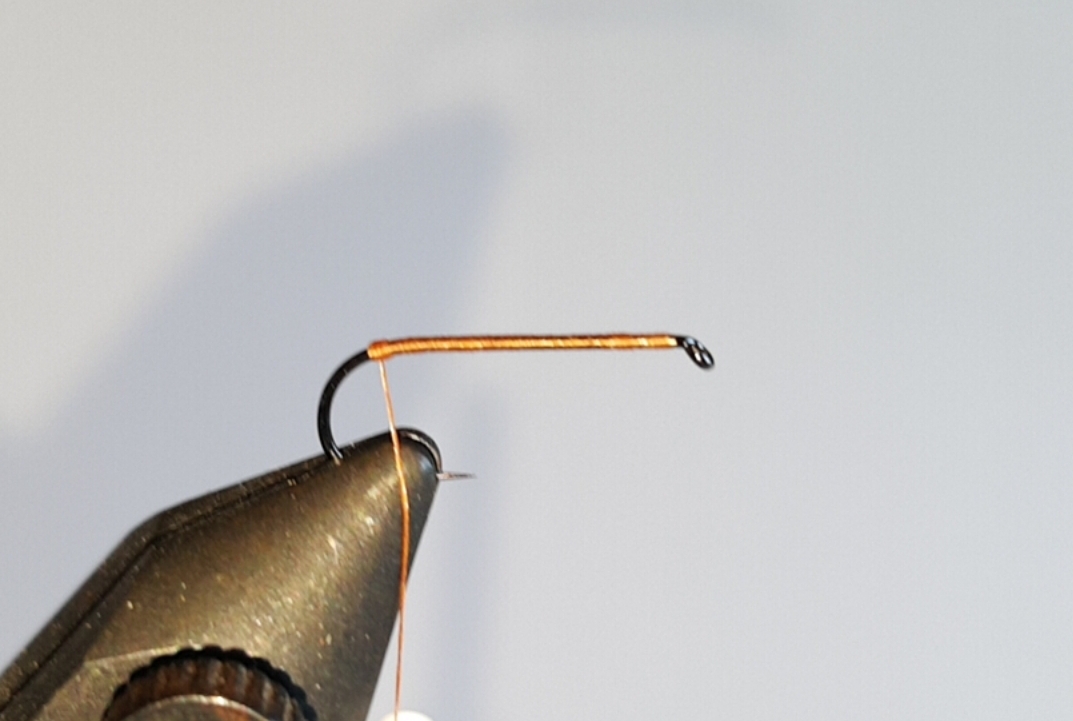
Once you get to this point, tie in a small bunch of fibers pulled from the side of a good sized Bugger Pack feather. Cut the ends that were closest to the quil of the feather, so they can be gently rolled between your fingers to spread out the tips.

Once those are snugly in place, take three strands from the Elk Hair. Look for a set that are fairly thick, and well colored, so they have contrast. Tie them in, over the grizzly feather fibers, so they spread out like the tails on a mayfly.
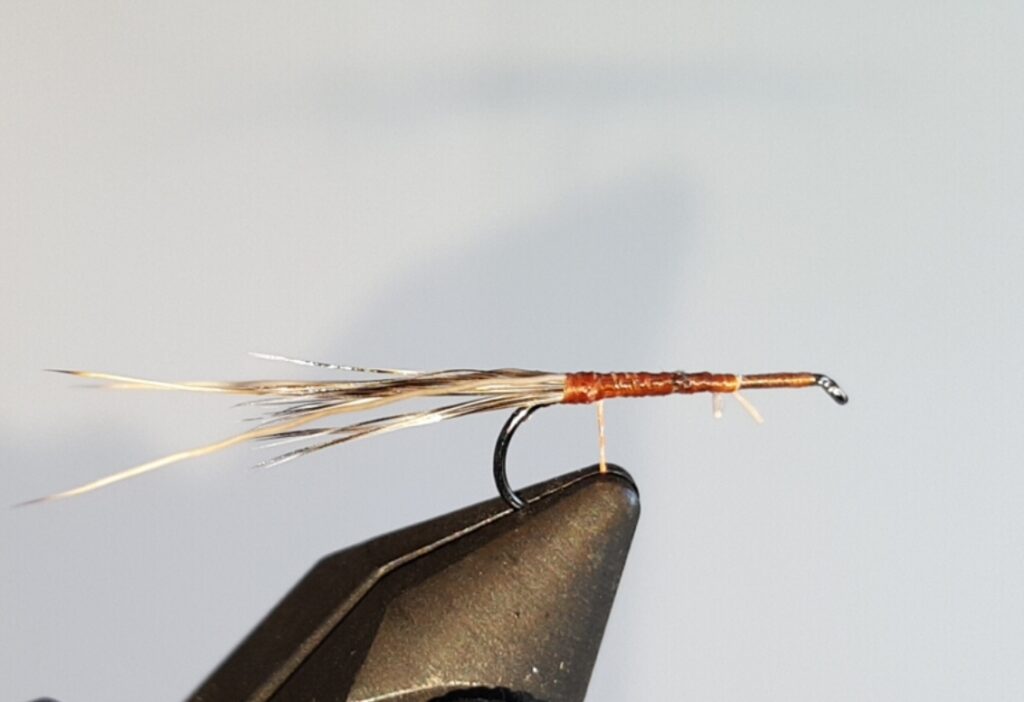
First time trying to do a mixed tail, and the elk hairs were a pain to line up and either support or restrict to keep them properly placed, but in the end, I found that anchoring each, one at a time, with a couple wraps of their own kept them at least somewhat in line.
With them locked down, wrap forward, tie on two feather tips (from the bugger pack), angled forward, then firmly lock them in place, support them to a good angle, throw in a few wide wraps to the tail, and dub back towards the front.

Getting the wings to take good angles off the center line, and to remain at roughly 45-degree from the vertical takes a few things. A nice set of additional thread wraps right in front of them (tight to where they were tied in) creates a “thread dam” that pushes them up into the air. From there, wrapping in figure eight passes, to alternately pressure the bases of them forward then backward, serves to keep them locked in place.
From here, trim the end on the grizzly hackle, and tie it in so the trimmed end in parallel to the shank of the hook, lying between the wing feather tips,, with the bulk of the feather trailing towards the back.
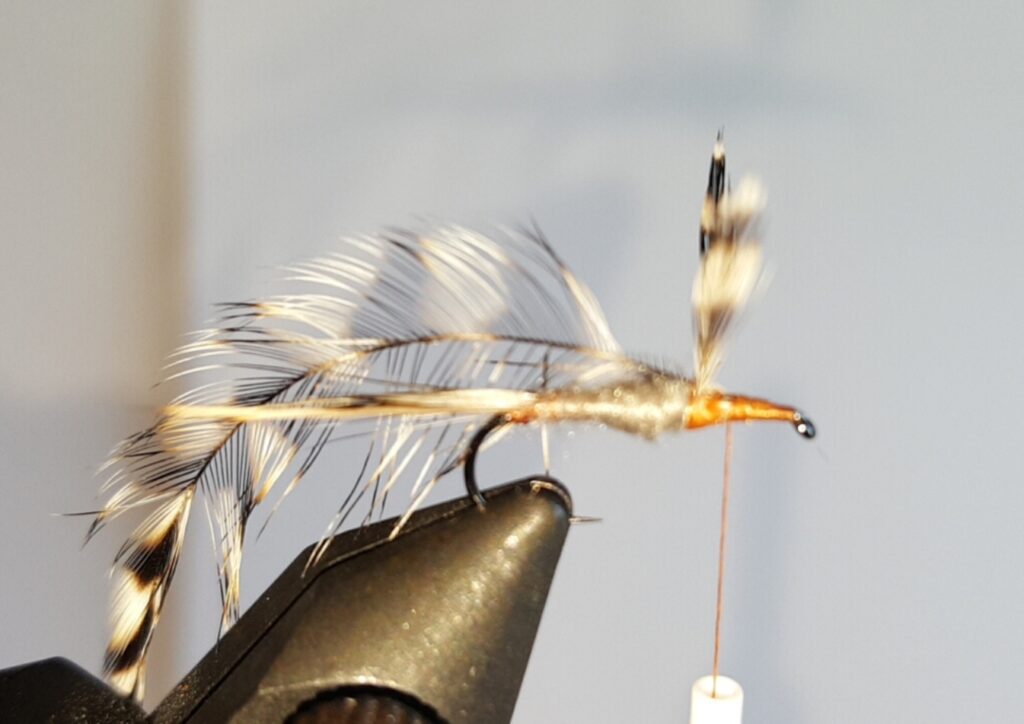
Wrap the thread to the front, then begin to make rotations with the hackle feather. I do two full turns behind the wings, then 4 or 5 in front of them. Keep them pretty tight to the body, then whip finish once the front wraps are done and add a drop or two of head cement.
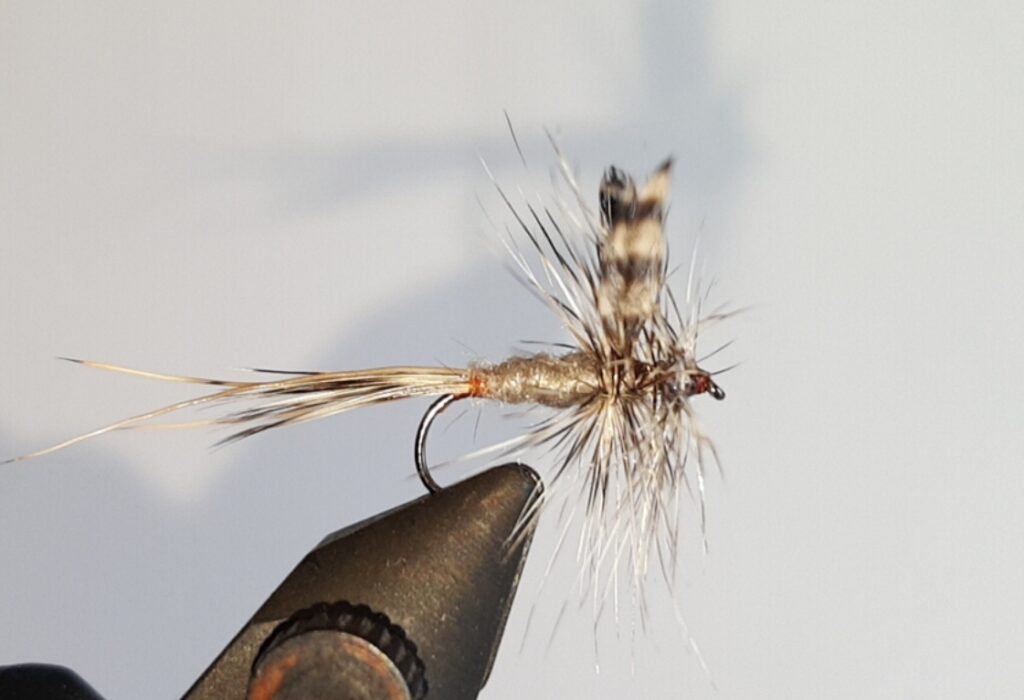
It had been a long while since I tied an Adams (meaning both that my hands felt clumsy and my vision and eyeglass prescription has changed!), but it looked like the tying had gone largely as planned.
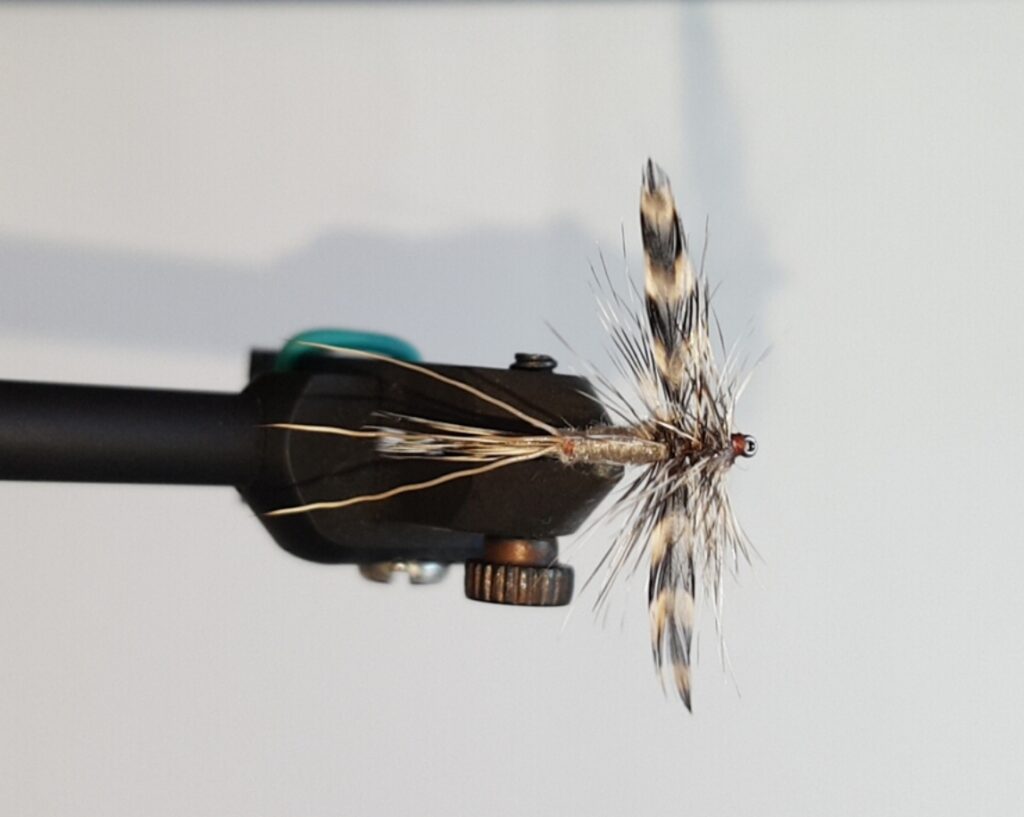

My goal was to keep a bit of the traditional Adams tail, for buoyancy, but to overlay the Elk Hair strands to create a strong(er?) visual cue, so the trout think this could be a mayfly as it zips by.
Anyway, a few months to go before WA opens the next fishing season, so I will have to wait to see if it works out. We shall see.
Tight lines.
